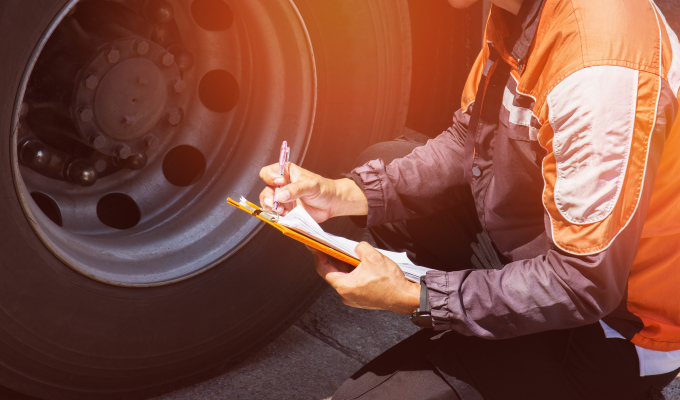By John Kuder
You need simple solutions to reduce your fleet’s cost of loss. One way to do so is to focus on fleet vehicle maintenance and repairs. After all, once you buy a shiny new truck for your drivers, don’t you want to keep it in working order?
IT’S IMPORTANT
Your unexpected breakdowns and maintenance issues are costing you money. Consider the following costs associated with a vehicle breakdown:
- Large repair costs
- Towing expenses
- Lost time of your employees
Not only that, but breakdowns on public roads are extremely dangerous. Your employees’ risk of accidents and injuries skyrocket when they are outside of their vehicle or even sitting in it on the side of the road.
With all that in mind, a single vehicular breakdown can cost thousands of dollars. The costs are exponentially higher if it leads to an employee injury. Preventive maintenance and repairs on your fleet vehicles are key components to running an efficient and profitable business.
MAINTENANCE STRATEGIES
If you don’t have a plan in place for maintaining and repairing your fleet vehicles, you run the risk of unexpected breakdowns and damages. These are costly and dangerous to your employees. So, what’s the solution?
Here are four key components to keeping up with vehicle maintenance to avoid high costs of loss:
- Vehicle pre- and post-trip inspections
- Fleet vehicle maintenance logs
- Assign vehicle repairs, maintenance, and inspections to someone
- Defensive driving training to prevent damage
TRIP INSPECTIONS
If you want to put safe vehicles out on the road, your drivers must complete pre-trip and post-trip inspections. These inspections should be completed and logged by drivers before and after driving a company vehicle. Pre-trip and post-trip inspections are essential because they catch issues before they become a problem.
- Here are some keys to correctly implement pre-trip and post-trip inspections:
- Drivers should be trained on how to complete these inspections thoroughly and consistently
- Drivers should have a Driver Vehicle Inspection Form (DVIR) that they fill out and give to maintenance
- Supervisors should sign-off on a DVIR form before a driver takes a vehicle off of the lot
- Make sure drivers know when to NOT drive a vehicle—certain vehicle maintenance issues are too severe for a vehicle to be on the road
MAINTENANCE LOGS
Not all fleet vehicle repairs will cost the same. According to a study conducted by Jones Lang LaSalle and a telematics company, preventive maintenance can be 30 to 50% cheaper than required maintenance. Think of it this way: It costs much less to replace tires than it does to replace the entire wheel of the vehicle. When you take the time to complete preventive fleet vehicle maintenance, you can reduce your cost of loss.
It’s essential you know what preventive maintenance needs done and when to do it. You should complete fleet vehicle maintenance based on:
- Vehicle type
- Vehicle mileage
- Vehicle condition and operating conditions
- Time since last service check
- Hours in operation
- Frequency of vehicle use
There are fleet maintenance logs and software systems available to help you track all of this.
ASSIGN MAINTENANCE
When something belongs to everyone, it belongs to no one. In other words, if you don’t assign a task to someone on your team, it won’t get done.
You should hire someone or assign a current employee the following responsibilities:
- Track fleet vehicle maintenance logs
- Ensure pre-trip and post-trip inspections are completed
- Ensure preventive and necessary maintenance is complete
- Research essential maintenance for each vehicle type
If one person is dedicated to these tasks and is held accountable, you can ensure the tasks will be adequately completed.
PREVENT DAMAGE
If you have vehicles, you will have vehicle repairs. However, if you have unsafe drivers, you may have more vehicle repairs than you can handle. Accidents cost money. They raise insurance premiums, result in lost time, potentially lead to workers’ comp, and almost always result in damage to the vehicle.
You don’t need to accept accidents as a fact of life. There are high-quality safety training programs available to help reduce accidents by 20% or more. For some companies, a 20% reduction in accidents could mean cost savings of millions per year.
BE PROACTIVE
Don’t leave vehicle maintenance up to chance. If you ignore a problem today, it will cost you twice as much tomorrow.
Have your drivers complete vehicle inspections, use fleet vehicle maintenance logs, assign fleet maintenance to one person, and implement effective safety training. This four-tiered approach to vehicle maintenance will save you money while protecting your people.
ABOUT THE AUTHOR
John Kuder is a senior instructional designer at Avatar Fleet, the creators of the non-CDL safety training course. Find out more, visit www.avatarfleet.com/fsc.




